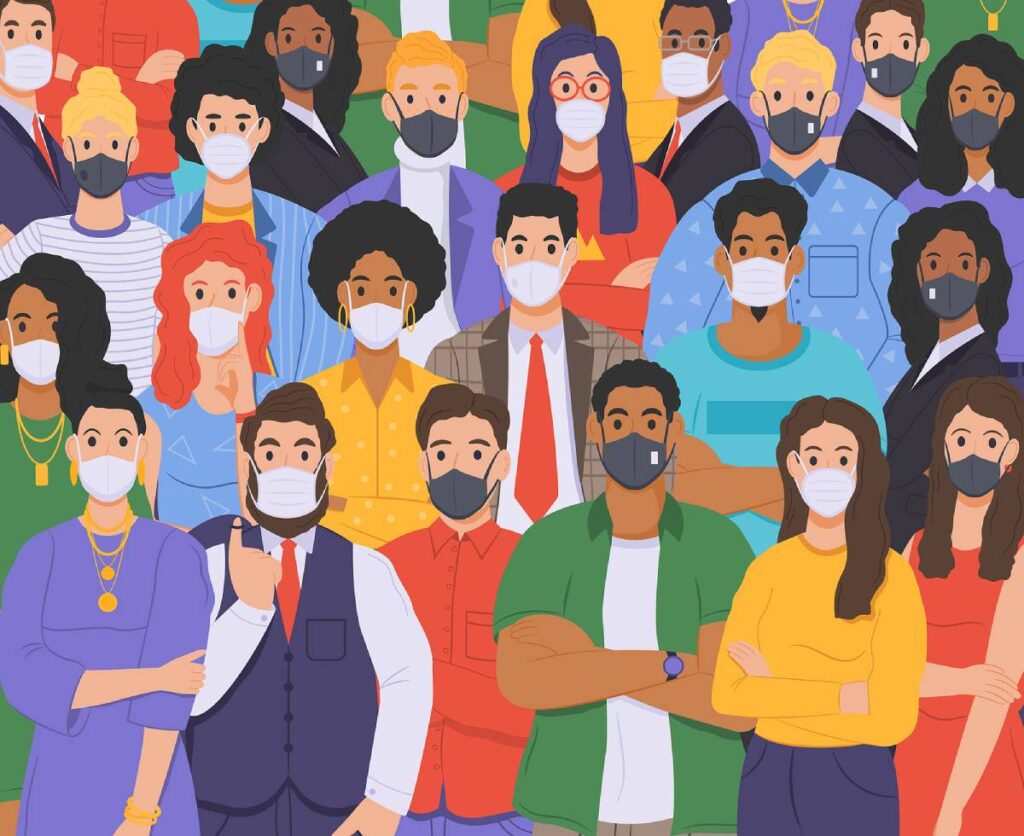In 2020, the world discovered a new “normal” with COVID-19. The disease forced the world to shut down, maintain social distance and add masks to our daily outfits. Today, the pandemic may seem like a thing of the past, but it continues to be present, with new strains of the virus being discovered.
Variants and Their Effects
The Omicron variant and subvariants have been the primary causes of illnesses in 2022. One of these strains, known as BA.5, started predominating in the United States in June. Although BA.5 seems to cause only a moderate illness, specialists think it is now the most contagious virus strain.
Although the U.S.-based vaccines were created to guard against the original coronavirus strain and have been observed to become less effective over time against infection, they still prevent severe disease and death. (Katella, 2022)
Unvaccinated individuals develop immunity by contracting illnesses. It is being discovered that neither becoming sick nor getting vaccinated offers perfect or long-lasting protection against the same illness. A more significant percentage of persons contracting COVID are likely to have had vaccinations.
The immunizations are still quite effective against significant sickness and hospitalization, on the other hand. For instance, new evidence from New York State indicates that vaccination reduces hospitalization risk by 20 times. Although vaccinations won’t completely protect you from illness, they will save you from being very ill. (Johns Hopkins)
Undercount of Cases
When Omicron arrived last fall, instances increased dramatically because the new, more contagious variety bypassed preexisting immune responses and infected many individuals, who then disseminated the virus like wildfire. The flame was swiftly put out by many causes, including increased public awareness, altered public health messaging, and behavioral changes on the part of some individuals. Ultimately, there were so many sick people that there were fewer people for the virus to infect.
Omicron Spikes
Omicron built a skyscraper on the rankings between December 2021 and mid-February 2022, or around two and a half months. Since March, the wave has only drawn the ascending portion of what appears to be a tiny hill; however, the proper shape is much taller. In general, similar tendencies have been observed elsewhere as well. In June, rapid-test result statistics are still being shared. (Tayag, 2022)
Endemic or Epidemic?
Another step toward endemicity was made when the Centers for Disease Control and Prevention (CDC) modified its recommendations for monitoring COVID-19 risk in communities. The new recommendations calculate the number of hospital admissions related to COVID-19 in the prior week, the percentage of staffed hospital beds occupied by COVID-19 patients, and the number of new COVID-19 cases per 100,000 people in the prior week, rather than focusing on the percent of test positivity and COVID-19 cases per 100,000 people.
These computations will determine whether the CDC rates the risk level for the region as low, medium, or high. The CDC recommendations aim to reduce severe sickness and prevent overtaxing healthcare facilities, instead of concentrating on stopping the spread of the virus. (AMA, 2022)
Seasonal Spread
The Biden administration estimates that there will be 100 million new cases over the fall and winter, and a new variety could make that prediction worse. But it’s not inevitable that things will get this bad. If anything, the “When will it end?” wave warns that sudden, overwhelming surges are not always in our future. It can be pretty beneficial to slow this virus down, whether by immunizations or ventilation improvements. (Tayag)
The prevalence of immunization and booster doses must rise both locally and nationally. Evidence demonstrates that even with the most recent variations, those who have been immunized and given a boost are still protected against fatalities, serious illness, and hospitalization. If eligible, CDC reccomends anyone aged 5 and older should receive a COVID-19 booster.
Visit https://covid-harriscounty.hub.arcgis.com/ for any information on COVID-19 in our community.
Works Cited
“Where We Are in the Pandemic.” Johns Hopkins Bloomberg School of Public Health, publichealth.jhu.edu/2022/where-we-are-in-the-pandemic.
Katella, Kathy. “9 Things Everyone Should Know about the Coronavirus Outbreak.” Yale Medicine, Yale Medicine, 20 July 2022, www.yalemedicine.org/news/2019-novel-coronavirus.
Tayag, Yasmin. “Why This Covid Wave Feels Different.” The Atlantic, Atlantic Media Company, 6 June 2022, www.theatlantic.com/health/archive/2022/06/omicron-variant-seasonal-infections/661181/.
Marc Zarefsky Contributing News Writer. “How We Will Know When Covid-19 Has Become Endemic.” American Medical Association, 1 Apr. 2022, www.ama-assn.org/delivering-care/public-health/how-we-will-know-when-covid-19-has-become-endemic.




